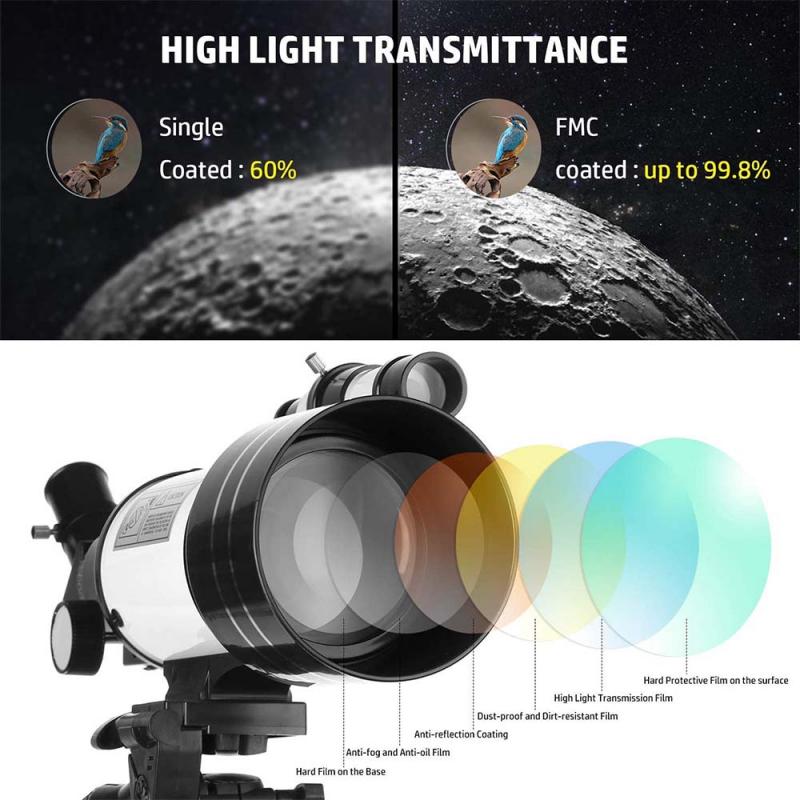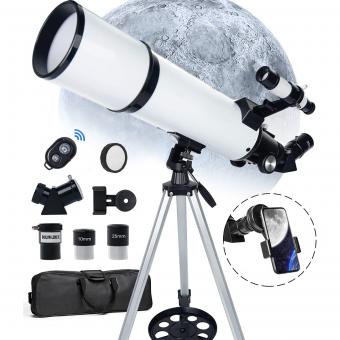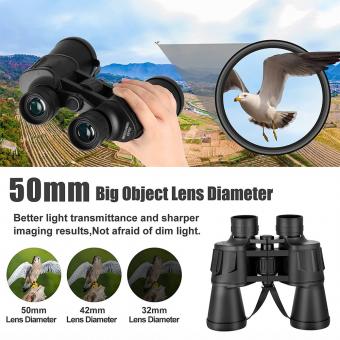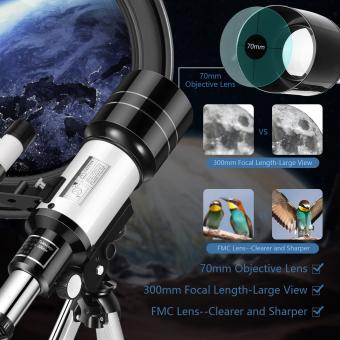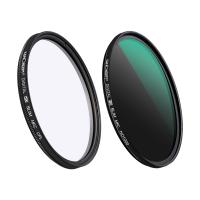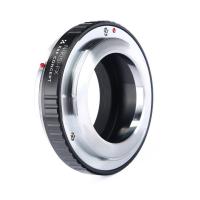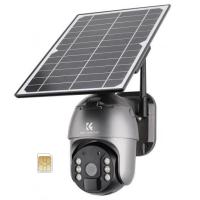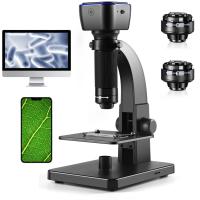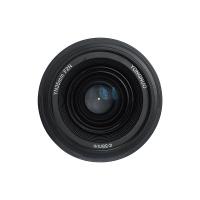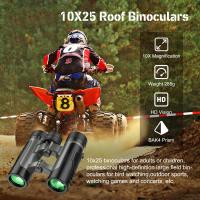What Makes A Good Telescope ?
A good telescope is characterized by several key factors. Firstly, it should have a large aperture, which refers to the diameter of the telescope's main optical component. A larger aperture allows more light to enter the telescope, resulting in brighter and more detailed images. Secondly, a good telescope should have a high-quality optical system, including lenses or mirrors that are well-crafted and free from defects. This ensures clear and sharp views of celestial objects. Additionally, a sturdy and stable mount is crucial for a good telescope, as it allows for smooth and precise tracking of objects in the sky. Finally, ease of use and portability are important considerations, especially for beginners or those who want to take their telescope on the go. Overall, a good telescope combines excellent optics, a solid mount, and user-friendly features to provide an enjoyable and rewarding stargazing experience.
1、 Aperture size and light-gathering ability
What makes a good telescope? One of the most important factors is the aperture size and light-gathering ability. The aperture size refers to the diameter of the telescope's main optical component, which is typically the objective lens or primary mirror. A larger aperture allows more light to enter the telescope, resulting in brighter and more detailed images.
The light-gathering ability of a telescope is crucial because it determines how much detail and faint objects can be observed. The larger the aperture, the more light the telescope can collect, enabling it to capture fainter objects and reveal finer details. This is particularly important for observing deep-sky objects such as galaxies, nebulae, and star clusters.
In recent years, there have been advancements in telescope technology that have further improved the light-gathering ability. For instance, the development of larger and more precise mirrors has allowed for the construction of telescopes with even larger apertures. Additionally, the use of advanced coatings on the optics has enhanced light transmission and reduced unwanted reflections, resulting in improved image quality.
However, it is worth noting that a good telescope is not solely determined by its aperture size and light-gathering ability. Other factors such as the quality of the optics, the stability of the mount, and the overall design and construction of the telescope also play a significant role in determining its performance.
In conclusion, a good telescope is characterized by its aperture size and light-gathering ability. The larger the aperture, the more light the telescope can collect, resulting in brighter and more detailed observations. With advancements in technology, telescopes with larger apertures and improved light-gathering abilities have become more accessible, allowing enthusiasts and professionals to explore the wonders of the universe with greater clarity and precision.
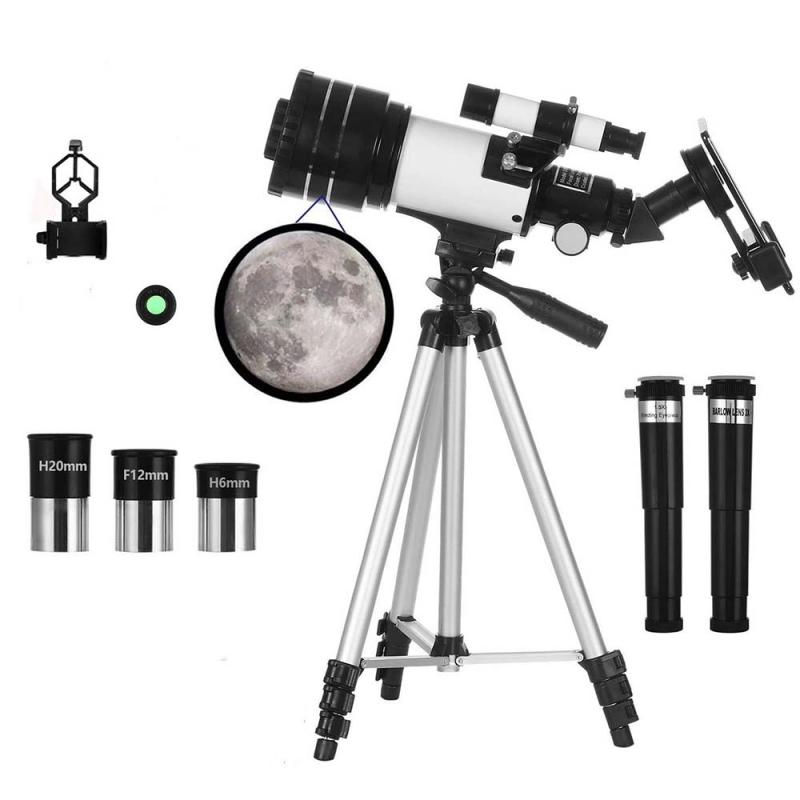
2、 Optical quality and precision
What makes a good telescope? Optical quality and precision are the key factors that determine the performance and effectiveness of a telescope. The ability to gather and focus light accurately is crucial for producing clear and detailed images of celestial objects.
Optical quality refers to the quality of the telescope's lenses or mirrors. A good telescope should have high-quality optics that minimize aberrations such as chromatic aberration (color fringing) and spherical aberration (blurring). These aberrations can distort the image and reduce the overall clarity. Advanced optical coatings, such as anti-reflective coatings, can also enhance the transmission of light and reduce unwanted reflections.
Precision is equally important in a telescope. The alignment and stability of the optical components, such as the lenses or mirrors, must be precise to ensure accurate focusing and tracking of celestial objects. A sturdy and well-built mount is essential for stability and smooth movement, allowing for precise adjustments and tracking of objects in the sky.
In recent years, technological advancements have further improved the capabilities of telescopes. For example, computerized or motorized mounts with built-in tracking systems have made it easier for astronomers to locate and follow objects in the sky. Additionally, the development of adaptive optics has allowed for real-time correction of atmospheric distortions, resulting in sharper and more detailed images.
Furthermore, the integration of digital imaging technology has revolutionized astronomy. CCD (charge-coupled device) and CMOS (complementary metal-oxide-semiconductor) sensors have replaced traditional film, allowing for more efficient and precise capturing of light. This has opened up new possibilities for astrophotography and scientific research.
In conclusion, a good telescope combines optical quality and precision to provide clear and detailed views of the cosmos. Technological advancements continue to enhance these qualities, making telescopes more accessible and powerful tools for exploring the wonders of the universe.
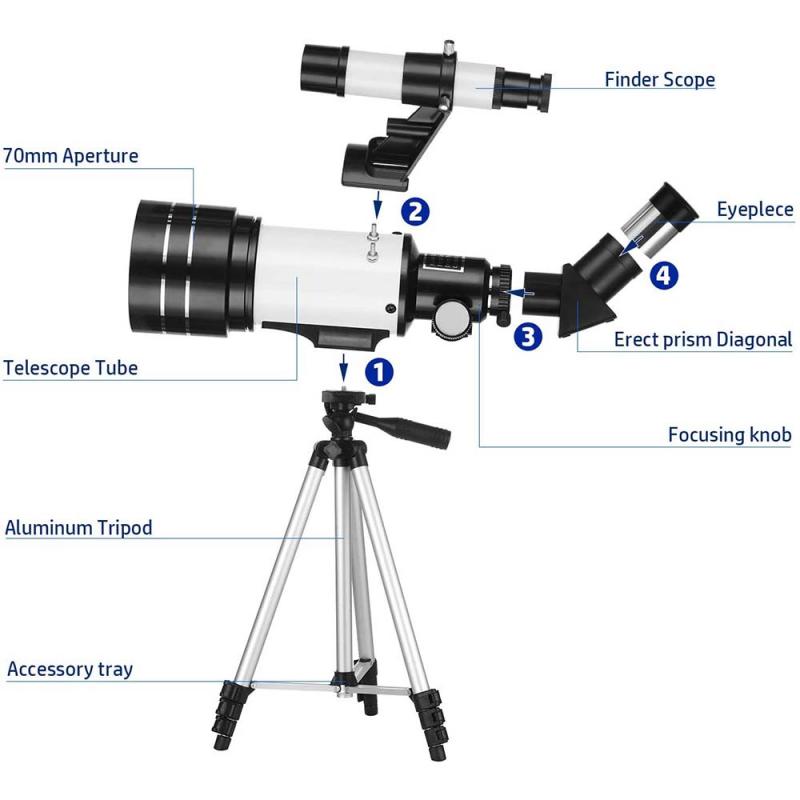
3、 Mount stability and tracking accuracy
Mount stability and tracking accuracy are two crucial factors that determine the quality of a telescope. A good telescope should have a stable mount that minimizes vibrations and provides a solid foundation for the optical system. Mount stability is essential because even the slightest movement or vibration can significantly impact the clarity and sharpness of the images observed through the telescope. A stable mount ensures that the telescope remains steady, allowing for precise and accurate observations.
Tracking accuracy is equally important as it enables the telescope to follow celestial objects smoothly as they move across the sky. A telescope with excellent tracking accuracy will keep the object centered in the field of view, allowing for prolonged and detailed observations. This is particularly important for astrophotography, where long exposure times are required to capture faint objects.
In recent years, there have been advancements in mount stability and tracking accuracy due to technological innovations. Many telescopes now come with computerized mounts that utilize motors and encoders to automatically track celestial objects. These computerized mounts can compensate for the Earth's rotation and provide accurate tracking, making it easier for beginners to observe and photograph celestial objects.
Additionally, some telescopes now incorporate advanced features such as autoguiding systems, which use a separate camera to continuously monitor and adjust the telescope's tracking. This further enhances tracking accuracy and allows for precise astrophotography.
In conclusion, a good telescope should prioritize mount stability and tracking accuracy. These factors ensure that the telescope provides clear and steady views of celestial objects, making it easier for astronomers and enthusiasts to explore the wonders of the universe. The latest advancements in technology have significantly improved these aspects, making telescopes more accessible and user-friendly for both beginners and experienced observers.
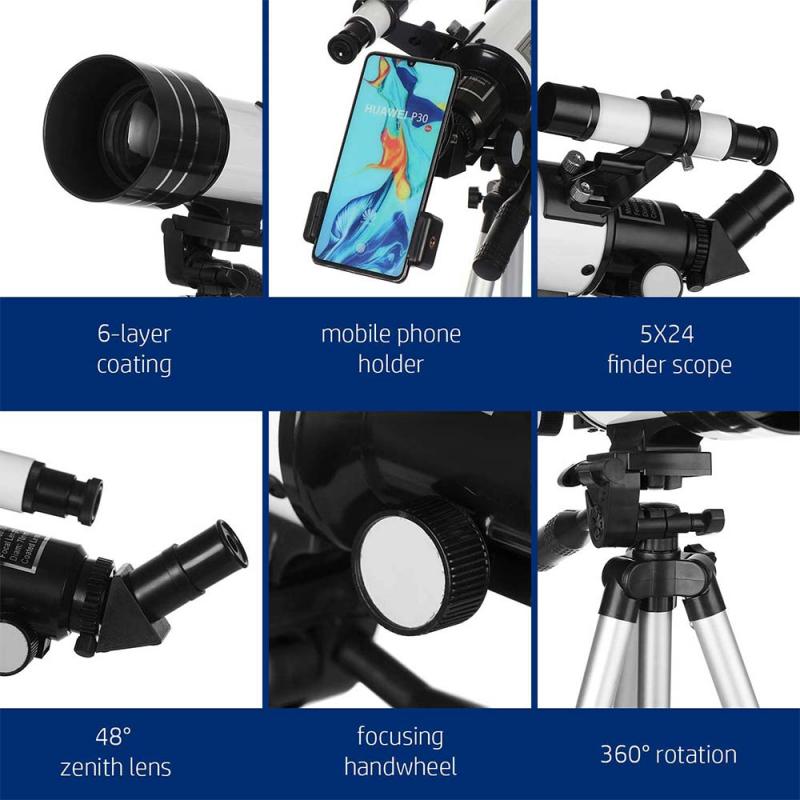
4、 Magnification range and eyepiece options
What makes a good telescope? One crucial factor is the magnification range and eyepiece options it offers. Magnification determines how much closer an object appears when viewed through the telescope. A good telescope should have a wide range of magnification options to cater to different observing needs. This allows users to adjust the magnification based on the object they are observing and the atmospheric conditions.
Additionally, having a variety of eyepiece options is important. Eyepieces determine the field of view and the level of detail that can be seen. Different eyepieces provide different magnifications and can enhance the viewing experience. A good telescope should offer a range of eyepieces to allow users to customize their observations.
In recent years, there have been advancements in telescope technology that have improved the overall viewing experience. For example, some telescopes now come with computerized mounts and tracking systems, making it easier to locate and track celestial objects. This can be particularly beneficial for beginners who may struggle with manually finding objects in the sky.
Furthermore, the quality of the optics and the telescope's ability to gather light are crucial factors. High-quality optics ensure clear and sharp images, while a telescope with a larger aperture can gather more light, resulting in brighter and more detailed views.
In conclusion, a good telescope should have a wide magnification range and offer various eyepiece options. The latest advancements in technology, such as computerized mounts, can enhance the observing experience. Additionally, high-quality optics and a larger aperture contribute to better image quality.
